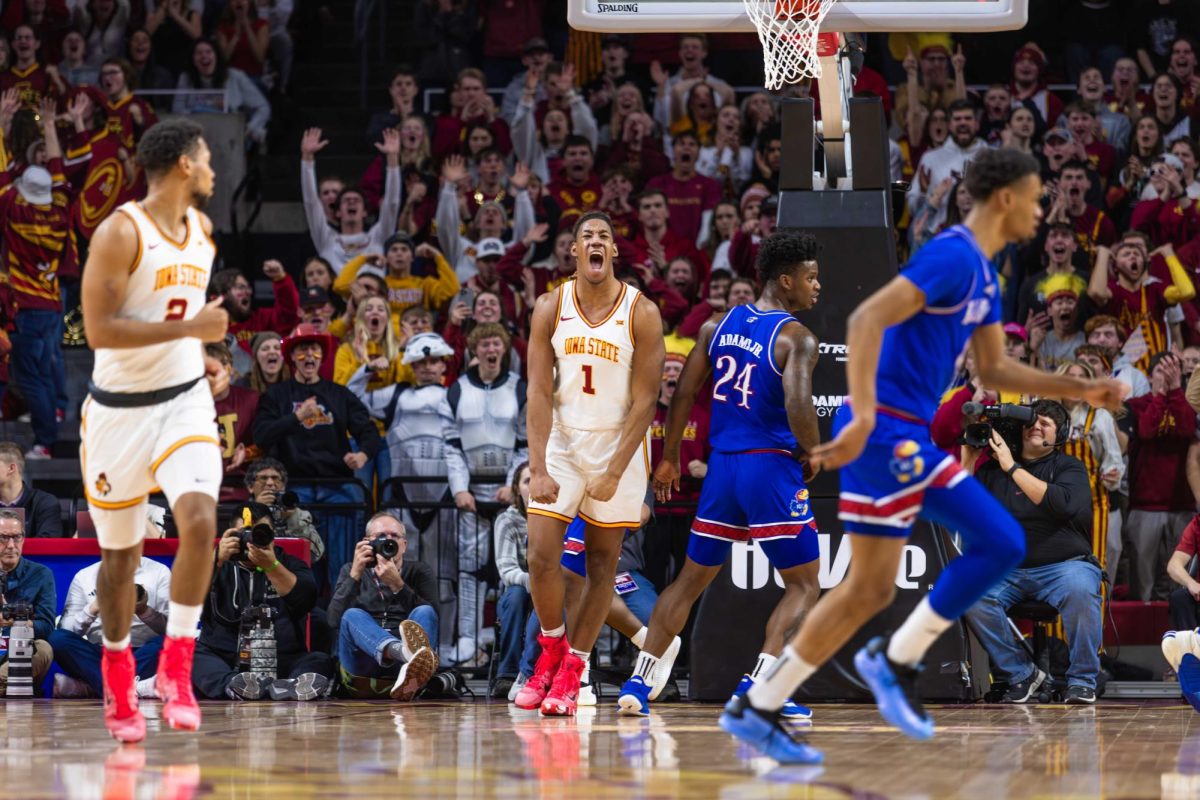Cartoon Controversy
April 18, 2006
Carmen Cerra has been drawing editorial cartoons long enough to anticipate people’s wild imaginations. After a cartoon leaves the drawing board, the cartoonist can only guess what effect the work will have on the world.
That is why Cerra, cartoonist for the Ames Tribune, wasn’t too surprised when he fielded a call on his office phone from a disenchanted senior citizen eager to discuss his TouchPlay cartoon.
“I had this old lady up at the front of the line – she thought I had given the women sagging breasts,” Cerra said.
He said the influence of editorial cartoons – and the responsibility it puts on the cartoonist – can be treacherous.
“Cartoons are very galvanizing – they can turn someone on or they can turn them off,” Cerra said.
The power of an editorial cartoon has been on display recently. A series of cartoons from a Danish newspaper incited protests for depicting the Muslim Prophet Muhammad as a terrorist wearing a bomb for a turban. Islamic law forbids any depiction of God or Muhammad.
Barbara Mack, associate professor of journalism and mass communication, said the combination of disregarding a central taboo of Islam and connecting that depiction to violence was an especially incendiary mix.
“Anyone who has studied or understands the fundamentals of Islam would understand why people are grossly offended,” Mack said. “They are offensive in that culture as it would be to show a Jew slaughtering a pig or Jesus murdering someone.”
Cerra said he has had mixed reactions to the cartoons. Initially he thought the creator had been irresponsible to draw no distinction between terrorism and Islam, but he also finds it important to consider the author’s message.
“I had to sort of pull back and think this is just an interpretation, this is just this person’s opinion on what is going on,” Cerra said. “Maybe that’s just what they think. Maybe they think Islam is a breeding ground for terrorism.”
Although the message of the Danish cartoons may have been intentionally provocative, Mack said the limiting factor to any publicly available material is not the content of the message, but the conviction of its creator.
“You have to be able to stand behind the argument that you are making,” Mack said.
Dave Carpenter, an Iowa freelance cartoonist who has contributed editorial cartoons to national publications, including The Wall Street Journal, said cartoons can still be effective without an agenda to advocate or offend.
In his own editorial cartoons, Carpenter has found the most success creating jokes with an ambiguously more liberal or conservative hook.
“You just kind of leave it where both sides can relate to the issue from their perspective,” Carpenter said.
Cerra said he considers a variety of factors when deciding what issues to depict in his cartoons. Traditional news values such as timeliness, locality and uniqueness are important to what story deserves to be addressed. No matter what issue is being depicted, Cerra said the responsibility for creating conflict should always lie with the newsmakers, not the cartoonist.
“The goal shouldn’t be to stir up the controversy,” Cerra said. “Your goal should be to expose the news.”
Once a topic has been chosen, the artist has to decide how to convey his or her message in a way that pairs humor with clarity and a minimal risk of misinterpretation.
“It is really impossible to do a cartoon to please everybody or anger everybody because there are so many viewpoints,” Carpenter said.
Cerra said clarity is of prime importance to creating cartoons that appeal to the broadest possible audience.
For him, creating clarity means staying informed and often finding pop culture references that provide both humor and a common frame of reference for understanding the cartoon.
“It’s important to be responsible but there is only so much you can do,” Cerra said. “A thousand people can look at a cartoon and know what it’s about and still interpret it in a different way.”
When a taboo is crossed or a meaning misinterpreted, consequences can be hard to predict. Cerra recalls his own experience depicting Muhammad in one of his cartoons.
“I had a call the next day after the cartoon ran,” Cerra said. “They explained in really peaceful terms, there was no name calling. They said, we have to explain to you that this is not what we accept.”
The right and wrong way to react to controversy will be one of the topics under discussion when Iowa State hosts a discussion on editorial cartoons Thursday at the Memorial Union.
The lecture will discuss cultural sensitivities, as well as legitimate reactions to offensive cartoons.
Creating good political cartoons takes more than an eye on the news and a knack for pop culture.
Cerra said there is at least one more unique qualification that is often necessary to dream up and develop ideas.
“Sometimes just having a twisted sense of humor,” Cerra said.
“You essentially you have to be a smart a— to come up with cartoons.”






